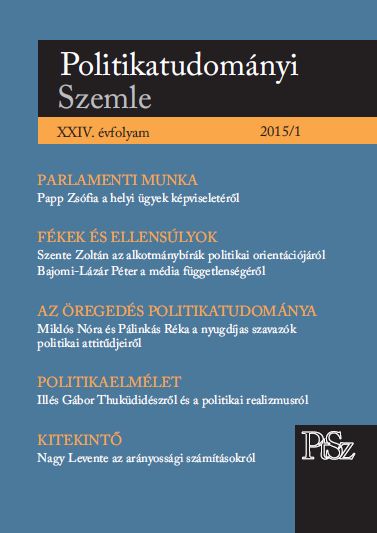Arányossági számítások Kanada választási rendszerében
Calculations of Proportions and the Election System of Canada
Author(s): Levente NagySubject(s): Politics / Political Sciences
Published by: MTA Politikai Tudományi Intézete
Keywords: Perfect proportions; deviation from proportionateness; effective number of parties; index of proportionateness; measuring of proportionateness;
Summary/Abstract: Election is perhaps the most widespread institution of universal nature of modern democracies inseparable from the democratic political systems. The election is the general technique of the transfer of power, the selection of the political elite and the taking into task of leaders and their removal, and in this sense it is not only a specific mediating mechanism between the individual – community and society – and political power but it is also legitimating the decision-makers and the political system. The extent of accepting and making the authority accepted largely depends on the proportionateness of the election and to what extent is the party preferences and political articulation of the society reflected in the elected body. Hence measuring the proportionateness of the election systems is also a basic task. This paper presents the most important indices of proportionateness. Next it presents the election results of Canada between 1935 and 2011 and maps the changes in the differences of the proportionateness indices. With this we wish to point out that understanding the indices of proportionateness is at least as important to the proper analysis and assessment of any election system as the power relations among the parties figuring in the given system or knowing the election formulae transforming valid votes into mandates.
Journal: Politikatudományi Szemle
- Issue Year: XXIV/2015
- Issue No: 1
- Page Range: 135-158
- Page Count: 24
- Language: Hungarian

